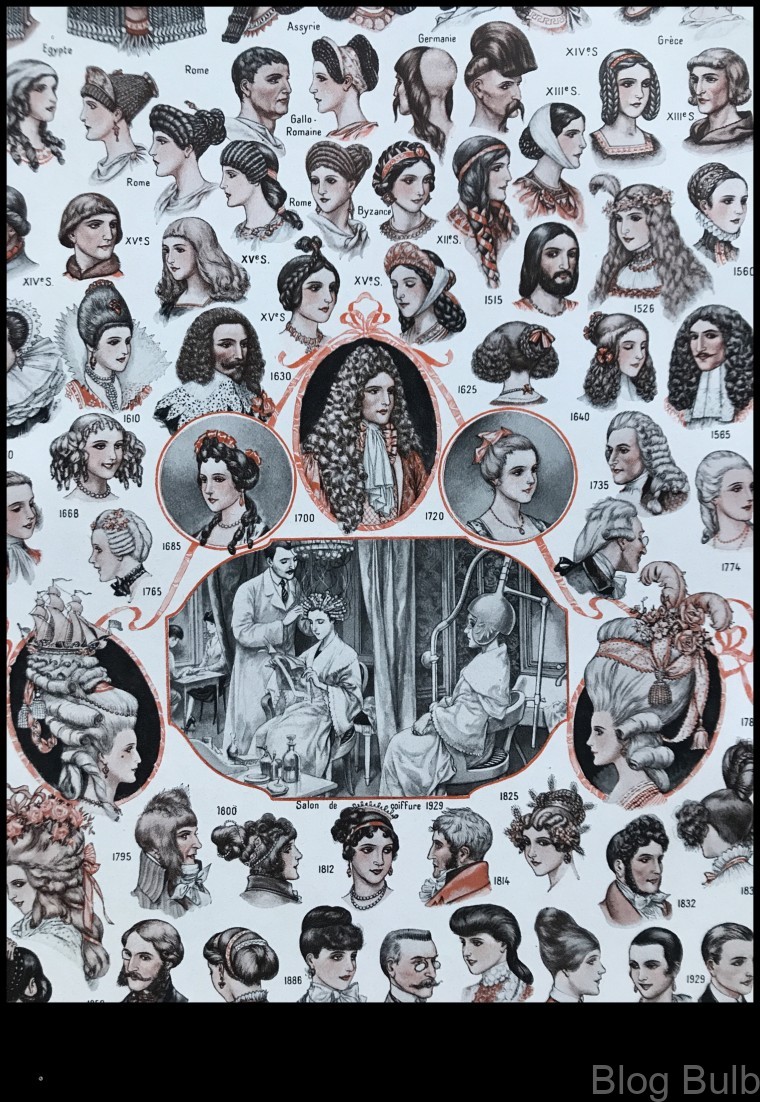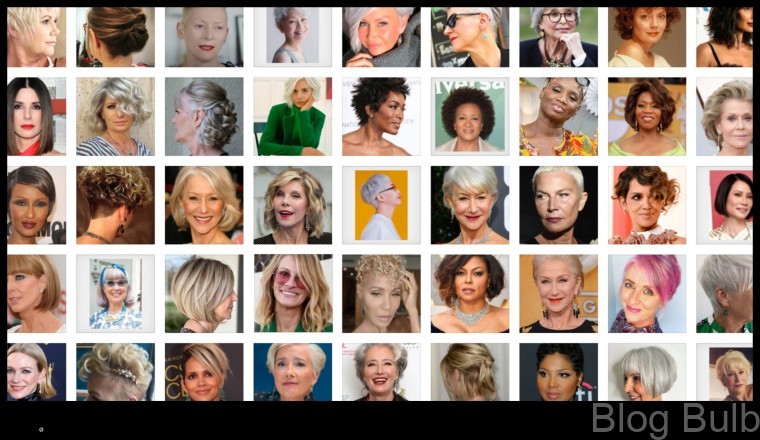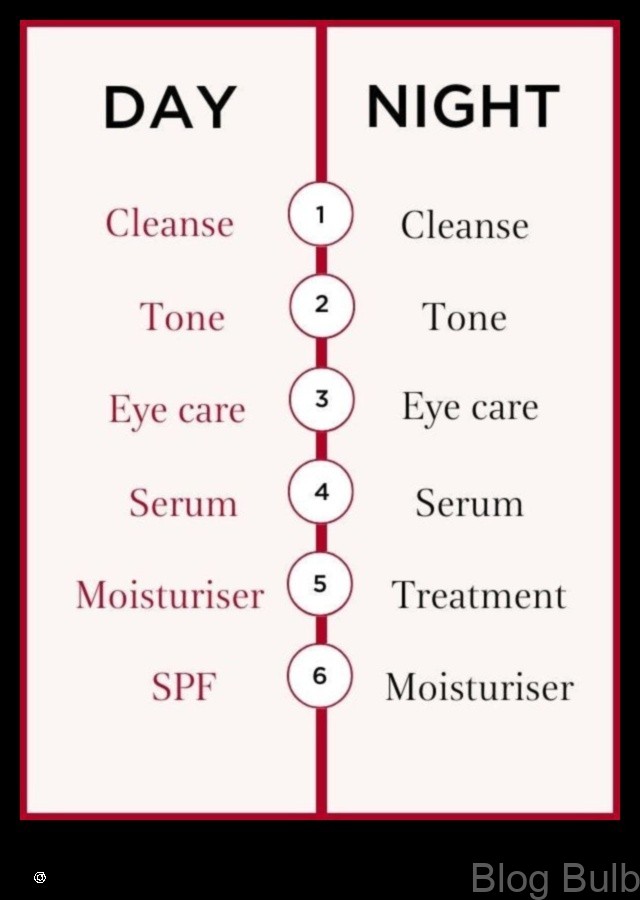
Table of Contents
Hairstyles Throughout History
This article provides a brief overview of hairstyles throughout history. It covers ancient hairstyles, medieval hairstyles, Renaissance hairstyles, Victorian hairstyles, Edwardian hairstyles, 1920s hairstyles, 1930s hairstyles, 1940s hairstyles, and 1950s hairstyles.

Ancient Hairstyles
Ancient hairstyles varied widely from culture to culture. In ancient Egypt, for example, men and women often wore their hair long and straight. They would often use oils and ointments to style their hair, and they would sometimes wear wigs. In ancient Greece, men typically wore their hair short and neat, while women wore their hair long and flowing. They would often wear elaborate hairstyles that were often adorned with flowers, jewelry, and other accessories.
Medieval Hairstyles
In the Middle Ages, hairstyles were often dictated by social status. Men and women of the upper class typically wore their hair long and flowing, while those of the lower class often wore their hair short and cropped. During the Middle Ages, there was a trend towards wearing hair in elaborate hairstyles that were often adorned with jewels and other accessories.

Renaissance Hairstyles
During the Renaissance, hairstyles became more elaborate and ornate. Men and women of the upper class often wore their hair in long, flowing locks that were often curled or styled into elaborate shapes. They would often wear wigs, and they would sometimes use hair extensions to add length and volume to their hair.
Victorian Hairstyles
Victorian hairstyles were characterized by their simplicity and elegance. Women typically wore their hair in long, flowing locks that were often parted in the middle and styled into a bun or chignon. They would often wear hats or bonnets to protect their hair from the elements.
Edwardian Hairstyles
Edwardian hairstyles were characterized by their height and volume. Women typically wore their hair in large, elaborate hairstyles that were often topped with feathers, flowers, or other accessories. They would often use hair extensions to add height and volume to their hair.
1920s Hairstyles
1920s hairstyles were characterized by their short, bob-like cuts. Women typically wore their hair in ashing bobs that were often styled with waves or curls. They would often use hair products to give their hair a shiny, polished look.
1930s Hairstyles
1930s hairstyles were characterized by their long, flowing locks. Women typically wore their hair in ashing waves or curls that were often styled with a center part. They would often use hair products to give their hair a shiny, polished look.
1940s Hairstyles
1940s hairstyles were characterized by their practicality and simplicity. Women typically wore their hair in short, bob-like cuts that were often styled with waves or curls. They would often use hair products to give their hair a shiny, polished look.
1950s Hairstyles
1950s hairstyles were characterized by their femininity and glamour. Women typically wore their hair in long, flowing locks that were often styled with waves or curls. They would often use hair products to give their hair a shiny, polished look.
FAQ
1. What are some of the most popular hairstyles throughout history?
Some of the most popular hairstyles throughout history include the long, flowing locks of the Renaissance, the elaborate hairstyles of the Victorian era, the short, bob-like cuts of the 1920s, and the long, flowing locks of the 1950s.
2. How have hairstyles changed over time?
Hairstyles have changed dramatically over time. In the past, hairstyles were often dictated by social status and fashion trends. Today, people are more free to choose their own hairstyles, and there is a wider variety of hairstyles to choose from.
3. What are some of the factors that influence hairstyles?
There are a number of factors that can
| Topic | Answer |
|---|---|
| 1. Hairstyles throughout history | A brief overview of hairstyles throughout history, from ancient times to the present day. |
| 2. Historical hairstyles | A more detailed look at specific hairstyles from different time periods, including ancient Greece, Rome, the Middle Ages, the Renaissance, and the Victorian era. |
| 3. Fashion history | A discussion of how hairstyles have been influenced by fashion trends over time. |
| 4. Hair trends | A look at the latest hair trends and how to incorporate them into your own look. |
| 5. Hair styles features | A discussion of the different features that make up a hairstyle, such as length, texture, and color. |
II. Ancient hairstyles
Ancient hairstyles varied widely from culture to culture. In some cultures, men and women wore their hair long, while in others they shaved their heads or kept their hair short. Hair was often styled in elaborate ways, using braids, twists, and other techniques. In some cultures, hair was also dyed or decorated with beads, shells, or other ornaments.
Some of the most famous ancient hairstyles include the Egyptian ‘melon’ style, the Greek ‘chignon’, and the Roman ‘toga’ style. These hairstyles were often associated with specific social classes or roles, and they could also be used to convey messages about a person’s status or personality.
Ancient hairstyles provide a fascinating glimpse into the past. They can tell us about the beliefs, values, and customs of different cultures, and they can also help us to understand how people used their hair to express themselves.
III. Medieval hairstyles
Medieval hairstyles were characterized by their simplicity and practicality. Hair was often worn long and flowing, but it was also often braided or pinned up for practical reasons. Men typically wore their hair short, while women often wore their hair long and flowing.
Some of the most popular medieval hairstyles included the following:
- The peasant braid: This was a simple braid that was worn by both men and women.
- The Viking braid: This was a more elaborate braid that was popular among Viking warriors.
- The maiden’s plait: This was a long braid that was worn by young women.
- The coronet braid: This was a braided crown that was worn by noblewomen.
Medieval hairstyles were often decorated with ribbons, flowers, or other accessories. They were also often dyed or highlighted to add color.
Medieval hairstyles were a reflection of the time period in which they were worn. They were simple, practical, and often decorated with natural elements.
IV. Renaissance hairstyles
Renaissance hairstyles were characterized by their elaborate styling and use of hair accessories.
Men’s hairstyles during the Renaissance were typically short and neat, with a part in the middle. They often wore hats or caps, which could be elaborately decorated.
Women’s hairstyles during the Renaissance were more varied, but they were often characterized by their height and volume. They often wore their hair in elaborate updos, with curls, braids, and other intricate styling.
Hair accessories were an important part of Renaissance hairstyles. Men and women alike wore hats, caps, and other headwear. Women also wore a variety of hair ornaments, such as ribbons, flowers, and jewels.
Renaissance hairstyles were a reflection of the opulence and creativity of the period. They were often elaborate and stylish, and they helped to create a sense of drama and grandeur.
V. Victorian hairstyles
Victorian hairstyles were characterized by their elaborateness and formality. Women’s hairstyles were typically piled high on top of the head, with curls and waves cascading down the back. Hair was often decorated with bows, ribbons, and flowers. Men’s hairstyles were also relatively elaborate, with long sideburns and mustaches.
Some of the most popular Victorian hairstyles for women included the chignon, the pompadour, and the updo. The chignon was a bun of hair that was gathered at the nape of the neck. The pompadour was a style that featured a high, puffed-up hairstyle on top of the head. The updo was a style that involved pulling all of the hair up into a bun or knot.
Men’s Victorian hairstyles were typically shorter than women’s hairstyles, but they were still quite elaborate. Popular styles for men included the side part, the flattop, and the mutton chop sideburns. The side part was a style that featured a part in the hair that was combed to one side. The flattop was a style that featured a short, flat hairstyle on top of the head. The mutton chop sideburns were a style that featured long, bushy sideburns that extended down to the jawline.
Victorian hairstyles were a symbol of status and wealth. The more elaborate the hairstyle, the more affluent the person was perceived to be. Victorian hairstyles were also a way for women to express their individuality and creativity.
VI. Edwardian hairstylesEdwardian hairstyles were characterized by their elaborateness and formality. Women’s hairstyles were often piled high on the head, with curls, waves, and braids. Men’s hairstyles were typically short and parted on the side.
Some of the most popular Edwardian hairstyles for women included the Gibson Girl, the pompadour, and the chignon. The Gibson Girl hairstyle was characterized by its high, piled-up bun, which was often decorated with flowers or other accessories. The pompadour was a more elaborate hairstyle that featured a large, rounded top and a long, flowing back. The chignon was a simple, elegant hairstyle that was gathered into a low bun at the nape of the neck.
Men’s Edwardian hairstyles were typically shorter than women’s hairstyles, and they were often parted on the side. The most popular men’s hairstyles included the flattop, the crew cut, and the buzz cut. The flattop was a short, cropped hairstyle that was popular with military men. The crew cut was a short, all-around haircut that was also popular with athletes and other active men. The buzz cut was a very short, close-cropped hairstyle that was often associated with military men and prisoners.
Edwardian hairstyles were a reflection of the social and cultural values of the time. The elaborate hairstyles for women reflected the emphasis on femininity and domesticity that was prevalent in Edwardian society. The simple, masculine hairstyles for men reflected the emphasis on strength and athleticism that was also prevalent in Edwardian society.
VII. 1920s hairstyles
The 1920s was a time of great change and experimentation in fashion, and hairstyles were no exception. Women’s hair was cut short and bobbed, and a variety of new styles emerged, including the Marcel wave, the finger wave, and the shingle.
The Marcel wave was a popular style for women in the early 1920s. It was created using a heated curling iron to create soft, loose waves in the hair. The finger wave was a similar style, but it was created using the fingers to create more defined waves. The shingle was a short, layered haircut that was popular in the late 1920s. It was named for the way it resembled a shingled roof.
These new hairstyles were a departure from the long, flowing hair that had been popular in the Victorian era. They reflected the modern, independent spirit of the 1920s flapper.
1930s hairstyles
The 1930s was a time of great change and upheaval in the world, and this was reflected in the hairstyles of the time. Women’s hairstyles became shorter and more modern, while men’s hairstyles became longer and more stylish.
One of the most popular hairstyles for women in the 1930s was the bob. The bob was a short, all-around haircut that was both stylish and practical. It was also a very versatile hairstyle that could be styled in a variety of ways.
Another popular hairstyle for women in the 1930s was the finger wave. The finger wave was a wavy hairstyle that was created by using your fingers to create waves in your hair. The finger wave was a very glamorous hairstyle that was perfect for evening wear.
For men, the most popular hairstyle in the 1930s was the short, slicked-back hairstyle. This hairstyle was clean and neat, and it was perfect for the man who wanted to look stylish and professional.
The 1930s was a time of great change and upheaval, but it was also a time of great style. The hairstyles of the 1930s were both stylish and practical, and they reflected the changing times.
IX. 1940s hairstyles
The 1940s were a time of great change and upheaval, and this was reflected in the hairstyles of the time. Women’s hairstyles became shorter and more practical, as they needed to be able to work and contribute to the war effort.
One of the most popular hairstyles of the 1940s was the victory roll. This hairstyle was created by rolling the hair up into a bun and pinning it in place. It was named after the victory rolls that were worn by pilots during World War II.
Another popular hairstyle of the 1940s was the pageboy. This hairstyle was characterized by its long, straight hair that was cut just below the chin. It was a popular choice for women who wanted a stylish and easy-to-maintain hairstyle.
The 1940s also saw the rise of the bob hairstyle. This hairstyle was characterized by its short, blunt cut. It was a popular choice for women who wanted a modern and stylish look.
The 1940s were a time of great change and upheaval, but they were also a time of great creativity and innovation. The hairstyles of the 1940s reflected the spirit of the times, and they continue to be popular today.
X. FAQ
Q1: What are some of the most popular hairstyles from the 1950s?
A1: Some of the most popular hairstyles from the 1950s include the ponytail, the bouffant, the victory roll, and the pompadour.
Q2: What were the different hair trends for men and women in the 1950s?
A2: Men’s hairstyles in the 1950s were typically short and neat, while women’s hairstyles were more varied and included longer styles with curls and waves.
Q3: How did hairstyles in the 1950s reflect the social and cultural trends of the time?
A3: Hairstyles in the 1950s reflected the optimism and sense of style that was prevalent in the United States during the post-war period.
Maybe You Like Them Too
- How to Detangle Curly Hair Without Damaging It
- Sole Mates A Guide to Finding the Perfect Shoes for Every Outfit
- Beauty Beyond Borders When Fashion and Makeup Collide
- 50 Chic Wedding Hairstyles for the Modern Bridesmaid
- The Best Shampoos for Hair Extensions A Guide to Keeping Your Extensions Healthy



